36 F. high in the Twin Cities Tuesday.
25 F. average high on December 23.
5 F. high on December 23, 2013.
0″ snow on the ground at KMSP.
December 23, 1996: Strong winds of 20 to 30 mph, combined with over a foot of new snowfall, resulted in restricted visibilities from blowing snow. As a result, several highways closed, including highway 19 west of Redwood Falls, highways 7 and 40 at Madison, and highways 67 and 23 out of Granite Falls.
December 23, 1982: Heavy rain over the state with slushy snow over southwest Minnesota. Twin Cities gets 2.61 inches of precipitation through Christmas. Some lightning and thunder with the heavy rain on Christmas Eve.
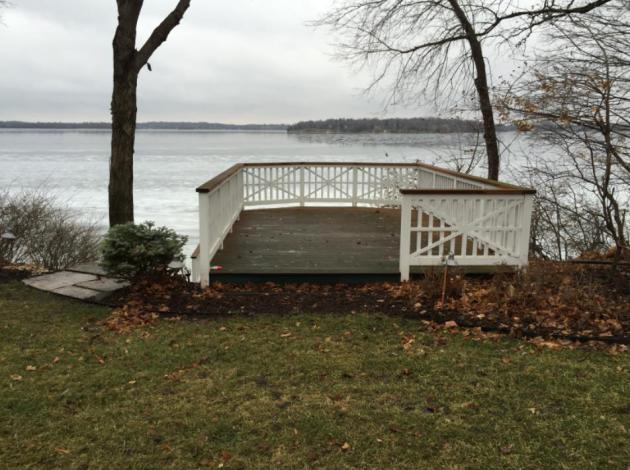
Christmas Harmony
Sorry Elvis, no blue Christmas this year. I’m looking forward to a silent night in the weather center as we all step into Christmas, celebrating the most wonderful time of the year, with or without snow. I’ll be home for Christmas – because where else would I be.
Do you hear what I hear? That’s Santa baby; he’s on his way – jingle bells reflected by a crescent moon as Rudolph the red-nose reindeer leads the way south.
Frosty the snowman has definitely seen better days, but don’t write winter cold and snow off just yet. Yes, you may freeze your jingle bells on New Year’s Eve as the mercury dips below zero. Cue chestnuts roasting on an open fire (minus the chestnuts).
A warming trend returns after the New Year, a reminder that daylight is increasing. So is El Nino. A Pacific flow keeps us storm-free the next 2 weeks.
In the meantime come all ye faithful to deck the halls with some badly-needed joy to the world. And to family and friends: you’re all I want for Christmas this year. Let it snow (somewhere – please) but here’s my hunch: Feliz Navidad doesn’t require a white Christmas. Snow is nice, but optional. It’s bigger than that.
Have yourself a merry little Christmas.

Who Will See A White Christmas This Year? Wednesday morning’s estimated snowfall map from NOAA shows more snow over southeastern Minnesota and northern Iowa; a white Christmas assured for much of Wisconsin and the Minnesota Arrowhead. But for much of Minnesota Christmas will be more green/brown than white this year, the first for the Twin Cities since 2011.
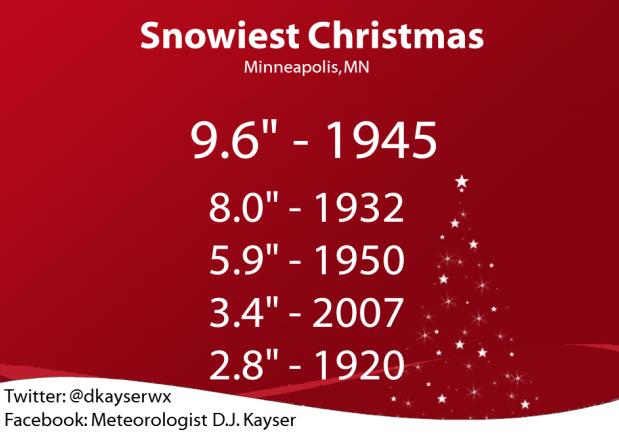
Christmas Weather Facts in the Twin Cities. Media Logic Group meteorologist D.J. Kayser has some great information about Christmas weather on his informative blog – here’s an excerpt: “…We have seen at least a trace of snow on Christmas 83 times since 1884, the most recent being last year when 0.2″ of snow fell. The most snow on Christmas was back in 1945 when 9.6″ fell. Remember that this only takes into account snow that fell on Christmas day…”

Christmas Snowfall. A stripe of heavy snow accumulates over Lower Michigan with significant snowfall from Boise and Great Falls to Park City and Salt Lake City. Out east the biggest concern will be heavy rain and high winds. 60-hour snowfall accumulation: NOAA NAM and HAMweather.
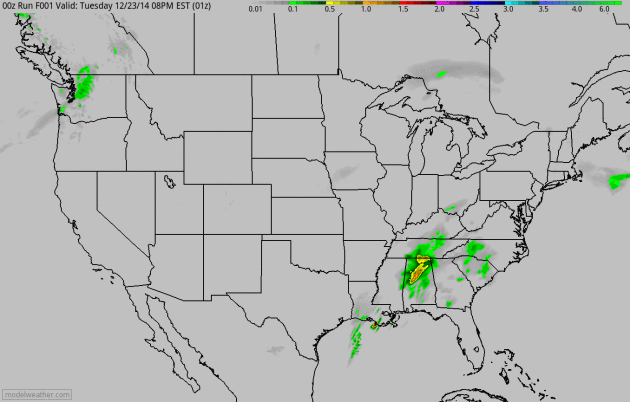
Dreaming of a Soggy Christmas? You’re in luck if you live out east. The same storm that whipped up tornadoes that left 4 people dead in Mississippi will push a smear of 1-3″ rains into the eastern seaboard, capable of urban flooding and travel slow-downs.

Slow-Motion Temperature Slide. Highs top freezing today, Thursday and Friday before cooling off into next week. Right now New Year’s Eve appears to be the coldest day with single-digit highs and lows dipping just below zero. GFS data shows 20s, even a shot at 30F returning to MSP between January 4-7.
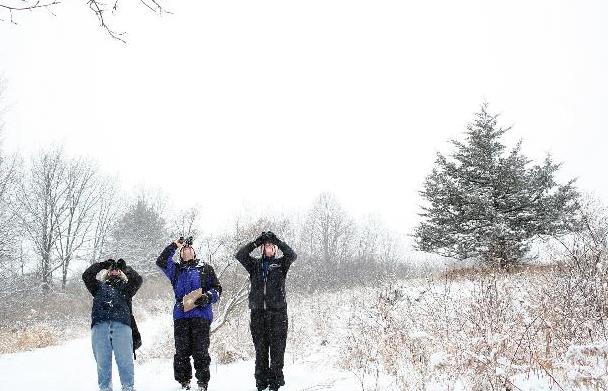
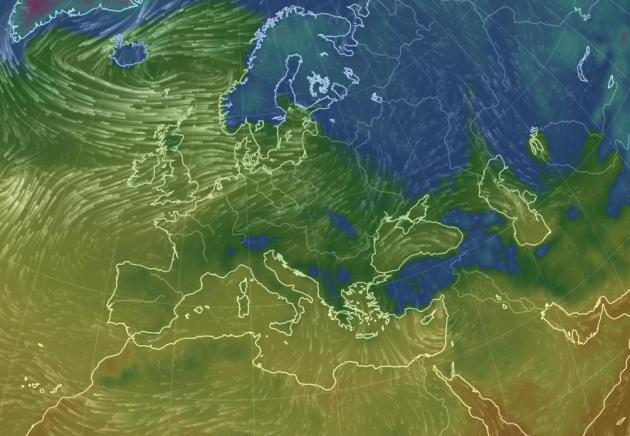
Hopeful Holiday Skiers Pray For Snow As Alps Resorts Feel The Effects of Warmer Weather. It has been unusually mild, almost springlike, across much of Europe in December and snow is at a premium. Here’s a clip from The Guardian: “…Head high or stay at home and, if you go, definitely wear a helmet. That is the message for skiers looking to hit the slopes this week after one of the worst starts to a season in living memory. As many of Europe’s leading ski resorts scramble to lure in skiers over the all-important Christmas period, there are fears some operators could be in grave financial difficulties if, as meteorologists suggest, the current lack of snow persists…” (Image: http://earth.nullschool.net).

Polar Stratospheric Clouds. Here’s an excerpt about some remarkable clouds showing up high in the skies above Scandinavia, courtesy of spaceweather.com: “…A possible outbreak of polar stratospheric clouds (PMCs) is underway around the Arctic Circle. Unlike normal grey-white clouds, which hug Earth’s surface at altitudes of only 5 to 10 km, PMCs float through the stratosphere (25 km) and they are fantastically colorful. Ivar Marthinusen sends this picture of the phenonenon from Skedsmokorset, Norway...”

The Ominous Lesson From The Sony Pictures Hack. The Washington Post reminds us all that, juicy Sony e-mails aside, we’re missing the forest through the trees with the hack, which is a new form of cyber-terrorism. Here’s a clip: “…The hacking of Sony Pictures also alerts us to the ultimate cybersecurity horror: the breakdown of vital electronic systems — power plants, financial networks, water supplies — that creates anarchy. Imagine a major city without power for an extended period. We don’t know the odds of this, but they are far greater than zero because so much of daily life depends on vulnerable digital networks…”

I Work At Sony Pictures. This Is What It Was Like After We Got Hacked. Fortune has the first-person account of what really happened during the worst case of corporate cyber-hacking on record; here’s the intro: “An employee* in the Los Angeles office of Sony Pictures Entertainment SNE 0.78% opened up to Fortune about the personal ordeal they went through following revelations of North Korea’s alleged cyber attack on the company. What follows is their words, condensed and edited for clarity…”

The World Is Not Falling Apart. Slate reminds us that, in spite of ominous headlines, things have been (much) worse in the past. Here’s an excerpt: “…As troubling as the recent headlines have been, these lamentations need a second look. It’s hard to believe we are in greater danger today than we were during the two world wars, or during other perils such as the periodic nuclear confrontations during the Cold War, the numerous conflicts in Africa and Asia that each claimed millions of lives, or the eight-year war between Iran and Iraq that threatened to choke the flow of oil through the Persian Gulf and cripple the world’s economy…”

The Coolest Water Toys of 2014. Gizmag has their list, which they’ve checked twice. Sorry, I enjoy daydreaming about water toys on the 24th day fo December. One of many character flaws: “We looked at 2014’s coolest land toys earlier this month; now we leave the shore in our wake and head out to sea. The year in water toys kicked off in a big way at Boot Düsseldorf 2014 in January and it ran strong the year through. In fact, we’d say the past year saw reveals and market launches of some of the coolest water toys in recent history … everything from transforming boats, to seven-figure personal submarines to underwater jet packs…”

25 Things You Might Not Know About “It’s a Wonderful Life”. Mental Floss has a few interesting nuggets; here’s an excerpt: “…Though Reed sadly passed away in 1986, Owen has stood as one of the film’s most dedicated historians, regularly introducing screenings of the ultimate holiday classic, including during its annual run at New York City’s IFC Center (now in its ninth year). She shared some of her mom’s memories with us to help reveal 25 things you might not know about It’s a Wonderful Life…”

CHRISTMAS EVE: Mostly cloudy. Good travel conditions. Winds: NW 10-15. High: 35
WEDNESDAY NIGHT: Patchy clouds, Santa sightings. Low: 27
CHRISTMAS DAY: Lingering clouds, above-average temperatures. High: 34
FRIDAY: Coating of light snow? Wake-up: 26. High: 33
SATURDAY: More clouds than sun, chilly. Wake-up: 13. High: 19
SUNDAY: Gray, no big travel headaches. Wake-up: 14. High: 21
MONDAY: Burst of flurries, turning colder. Wake-up: 17. High: 19
TUESDAY: Some sun. Won’t help much. Wake-up: 3. High: 11
Climate Stories…

2014: An Epic Year For Climate Change and Weather-Related Disasters. Here’s an excerpt from The Atlantic’s CityLab: “…The thermostat could’ve seemed low in your neck of the woods—meaning America’s East Coast and Midwest and the Falkland Islands—but temperatures were sweltering in the rest of the planet. Take a look at these abnormally high and record-hot readings, which represent a 1.2 degrees Fahrenheit deviation above the historical average. Notes the National Climatic Data Center: “This was the warmest January-November in the 1880-2014 record, surpassing the previous record set in 2010 by 0.02°F.…” (Graphic: NOAA NCDC).
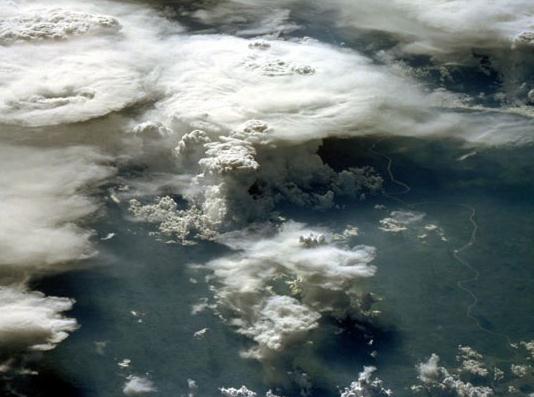
Climate Change By The Numbers: The Cold Data That Drove a Record-Hot Year. Salon does a good job breaking out some important numbers; here’s an excerpt: “…What follows is a by no means comprehensive look back at some of the big (and small) numbers driving those discussions. As we move forward to an international climate treaty at the end of 2015 — and onward, from there, to a world irreversibly transformed by the decisions we make in the near future — the fact remains that it’s only going to get hotter from here.
1.22: The deviation, in degrees Fahrenheit, of average global temperatures for the first 11 months of 2014 above the 20th century average, according to the NOAA.
142: Percentage by which atmospheric CO2 levels soared above the pre-Industrial Revolution average in 2013, the WMO announced in September, representing a record rate of growth…”
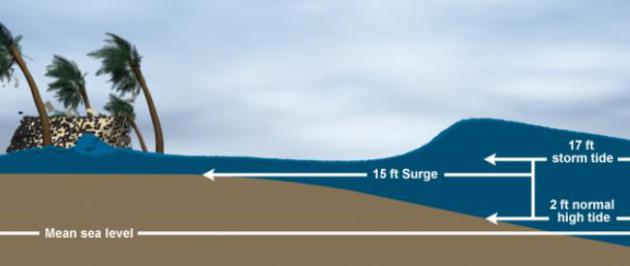
Climate Change Could Cost U.S. Coasts $1 Trillion by 2100. The concern: enhanced damage triggered by more frequent storm surges as tides continue to rise, threatening more coastal property. Here’s an excerpt from Science Magazine: “Climate change will cost U.S. coastal areas twice what analysts had predicted, according to a new study. Researchers had estimated that preparing coastal cities, repairing property damages, and relocating inhabitants for future sea level rise could have a roughly $500 billion price tag by 2100. But storm surge from tropical cyclones can cause additional local rises in sea level rise; that figure hits about $1 trillion, researchers report this month in Climatic Change…”

“Atmospheric Rivers” To Soak California As Climate Warms. The jury is still out on what impact a warming atmosphere will have on California and water supplies in the western USA. Will a perpetual ridge of hot high pressure spark pervasive drought, interrupted by flooding sparked by increasingly frequent El Nino episodes? Here’s a clip from a story at Live Science: “…Under current climate scenarios, such drought-busting “atmospheric rivers” will hit Northern California twice as often by 2100 as they do now, said U.S. Geological Survey hydrologist Mike Dettinger. “When the atmosphere is warmer, it holds more water vapor, so there is a huge increase in the number of these atmospheric rivers,” Dettinger said here Wednesday (Dec. 17) at the American Geophysical Union’s annual meeting…”

At Hanukkah Israel’s Colors Are Blue, White…And Green. Here’s a snippet of an interesting article at jns.org: “…Hanukkah is known as the Jewish festival of lights, commemorating the miracle of a Jewish rebel army’s oil burning for eight days when it should have only burned for one. Today, the real miracle of lights is that a country like Israel, which is roughly the size of New Jersey and is constantly under attack both from its neighbors and from terrorists within its own borders, has the foresight and initiative to champion the environmental movement. From Israel’s drip irrigation systems that dramatically decrease the amount of water needed to grow crops, to its hydrogen-fueled cars, the country practices what it preaches, showing the world that economic and environmental prosperity can go hand-in-hand…”
Photo credit above: “A photovoltaic array at Israel’s National Solar Energy Center in the Negev desert.” Credit: David Shankbone via Wikimedia Commons.

Miami’s Climate Catch-22. Building Waterfront Condos To Pay For Protection Against The Rising Seas. Here’s an excerpt from an article at The Washington Post: “…But Miami Beach needs this penthouse — and many more like it. The more developers build here, the more taxes and fees the city collects to fund a $300-million storm water project to defend the shore against the rising sea. Approval of these luxury homes on what environmentalists warn is global warming quicksand amounts to a high-stakes bet that Miami Beach can, essentially, out-build climate change and protect its $27 billion worth of real estate…”
* With 2014 coming to a close, weather organizations and independent researchers have crunched the numbers and found that 2014 will almost certainly go down in history as the hottest year on record. Global land and sea surface temperatures for the year-to-date have already broken records, and December is seeing above-average temperatures as well.
* 2014 marks only the latest in a string of years with record-breaking heat, however. It has been 358 months since we had a cooler-than-average month, and the fifteen hottest years on record have all come since 1997.
* Assuming current trends hold throughout the last week of this month, 2014 has set a new global temperature record despite the fact that it is also an El Niño Southern Oscillation (ENSO)-neutral year.
– bullet points above courtesy of Climate Nexus.

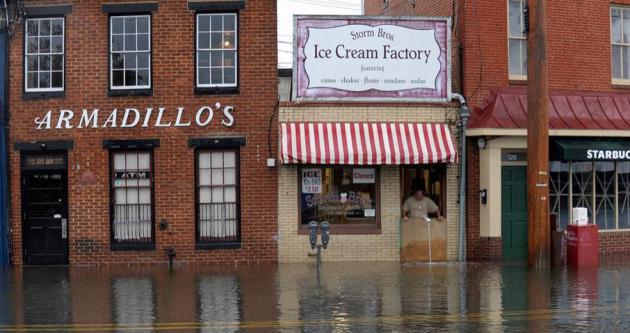
D.C. Has Passed Sea Level Rise “Tipping Point”, More Cities to Follow: Study. Meteorologist Andrew Freedman has the story at Mashable; here’s an excerpt: “…Sweet and co-author Joseph Park, also of NOAA, used tide-gauge data and mainstream sea-level-rise projections, to show that, in many places, the frequency of coastal flooding events is rising far faster than the mean sea level is. To date, the mean sea level rise is what has captured the most attention. “It’s not so much the mean that we are concerned about than it is the frequency of these lesser extremes,” Sweet said. In some cases, less than a foot of mean sea level rise may be all that is required to reach the threshold level of 30 days per year of nuisance-type flood events, he said. Such floods affect infrastructure that lies just 1 to 2 feet above sea level, which in many cases, includes critical shoreline roads, military bases, airports and water-treatment facilities…”
Photo credit above: “Sveinn Storm, owner of Storm Bros. Ice Cream Factory, surveys flood water outside his store in Annapolis, Md., on Oct. 30, 2012, in the aftermath of Superstorm Sandy.” Image: Susan Walsh/Associated Press.

Warming World’s Rising Seas Wash Away Some of South Florida’s Glitz. The Sydney Morning Herald takes a look at what rising sea levels are already doing in Miami; here’s an excerpt: “…While much of the nation argues about whether or not California’s once-in-a-thousand-year drought or the $US71 billion devastation of Hurricane Sandy might have been caused or exacerbated by climate change – or indeed whether or not the phenomenon even exists – in Southern Florida today you wander about in the water and see what it looks like when rising seas hit a modern western city. As with every other serious issue facing the United States, the acceptance of climate science has fallen down along partisan lines…”
Photo credit above: “Rising concern: Geologist Harold Wanless takes a stroll through flooded Miami streets.”
The average temperature in the Arctic country has risen by more than 2C since 1847, twice as fast as the global average.
Warming is most extreme during the festive month, which is now 4.8C hotter than it was before the industrial era, Finland’s top scientists have found.
“In future, if the temperature rises, we will not have snow cover in December,” researcher Santtu Mikkonen told RTCC.
– See more at: http://www.rtcc.org/2014/12/22/fast-finland-warming-means-blue-christmas-for-santa/#sthash.h3Gk1l2O.dpuf

Major Coral Bleaching In Pacific May Become Worst Die-Off in 20 Years, Say Experts. The Guardian has the story; here’s the introduction: “Warm sea temperatures are causing massive coral reef die-off across the Northern Pacific in what could be the start of an historic bleaching event around the world. Scientists warn extreme sea temperatures could cause a “historic” coral reef die-off around the world over the coming months, following a massive coral bleaching already underway in the North Pacific. Experts said the coral die-off could be the worst in nearly two decades. Reports of severe bleaching have been accumulating in the inbox of the US National Oceanic and Atmospheric Administration’s (NOAA) Coral Reef Watch programme since July…”
Photo credit above: “The destruction of coral reefs will make these vital barriers for the land less effective against the effects of climate change – such as sea level rise and storms.” Location: Arno atoll, Marshall Island. Photograph: Remi Chauvin.

12 Ways To Deal With A Climate Change Denier At The Holidays. Or any day for that matter. Here’s an excerpt from Australia’s The Conversation: “…While there is likely to be some wiggle room in the exact percentage, it’s fair to say that consensus is very high. And if 97 (or even nine) doctors told you that you had life-threatening but treatable cancer, would you act? Or would you keep looking until you found one doctor who told you not to worry about it, that the cancer isn’t serious, and that it’s all just a medical conspiracy to sell you chemotherapy?…” (Illustration: Skeptical Science).

